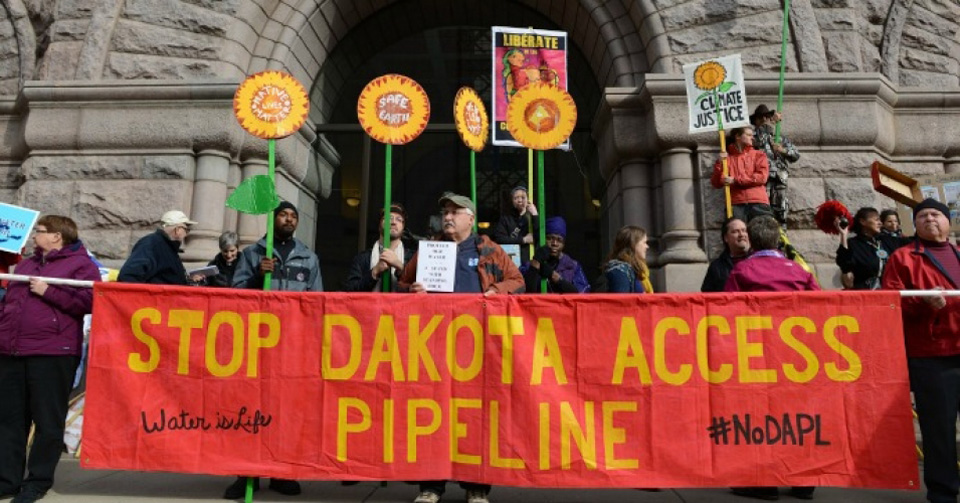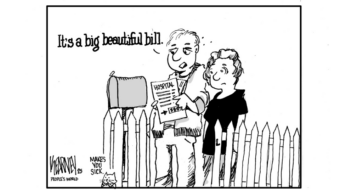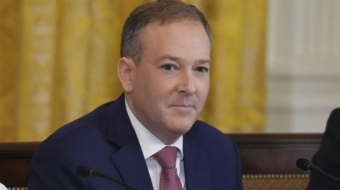
On Tuesday Senator John Hoeven (R-ND), the new chair of the U.S. Senate Committee on Indian Affairs, issued a statement declaring that the Acting Assistant Secretary of the Army had directed the Army Corps to proceed with the final easement necessary to complete the proposed route of the Dakota Access Pipeline (DAPL). This news comes less than a week after Donald Trump signed a Presidential memorandum reviving the Keystone XL Pipeline, and advancing the Dakota Access oil pipeline. Hoeven’s appointment had previously stirred up controversy, as the Senator had been vocal in condemning the mass protests against the Dakota Access Pipeline. Water protectors have hampered the construction of DAPL for months now, with the expansion of an occupation that grew into a settlement of thousands at Standing Rock and a global solidarity movement. Yet it seems that their worst fears have been confirmed.
While it does not quite constitute a formal issuance of the easement, the Acting Assistant Secretary’s notification indicates that the easement is imminent. Ultimately the Corps still must still take into consideration the various factors mentioned in the Presidential Memorandum, and notify Congress, before granting the official easement.
In response to the news The Standing Rock Sioux Tribe has stated that if the easement is granted, they will be “vigorously pursuing legal action.” As of this moment, there has been no official notice that the Environmental Impact Statement has been suspended or withdrawn, but Water Protectors are preparing for the worst.
SInce the news of the Presidential memorandum broke last Tuesday, the public has responded with immediate outrage, as organizers across the country have united in opposition of the continuation of both the Dakota Access Pipeline and Keystone XL. In cities such as Chicago, New York, LA, people gathered in in the streets, while protesters in Washington D.C. amassed in front of the White House just hours after the announcement was made. Many Indigenous leaders and environmental advocates have called for mobilization from across the country.
Judith LeBlanc, a member of the Caddo Tribe and director of the Native Organizers Alliance, spoke with People’s World about the ongoing battle. “The fight to stop the pipeline is going to take a struggle that is political, legal and spiritual,” she said. LeBlanc has been involved in the maintenance of the Standing Rock settlement, and is currently one of the few Water Protectors remaining in Cannonball, ND. In a statement she released to the public after the enactment of the Presidential memorandum, LeBlanc stated that Trump’s actions ‘violate the legal and moral sovereign treaty rights of the Lakota, Nakota, Dakota people and an aggressive rebuke of the over 300 tribes who stand with Standing Rock in opposition to the Dakota Access Pipeline.”
Questions remain for the activists as to what the best course of action might be. Several Water Protectors seek to head back to the Oceti Sakowin Camp site, but the settlement has become increasingly difficult to manage, especially with heavy flooding occurring near the main camp site. Others are determined to make their way to Sacred Stone camp, which is farther away from flooding regions, and still close enough to watch over the pipeline construction. LeBlanc, however, encourages Water Protectors to organize in their home states. “The people around the nation have an opportunity to mobilize in their communities.”
In the meantime, the demand for responsible governing and respect for the sovereign legal continues. Water Protectors have geared up for another long hard battle against the “Black Snake” pipelines.










